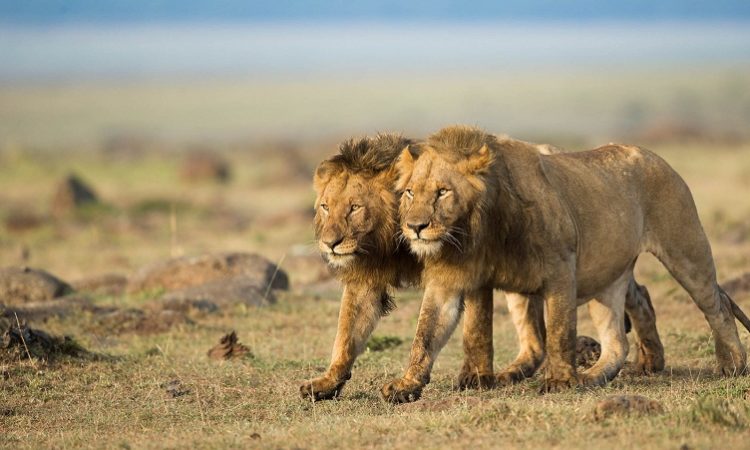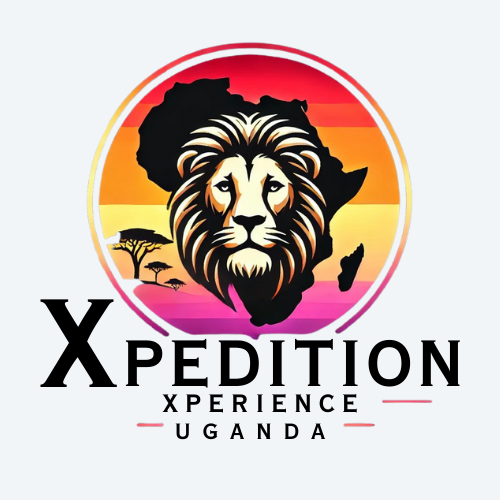The Masai Mara National Reserve in Kenya, with its diverse population of settlements and tribes, and its profusion of wildlife, captures the true spirit of Kenya safari. Encompassing an area of 1510 square kilometres, the Masai Mara National Reserve environment is home to an acacia forest, a zebra herd, and expansive plains and grasslands. Recognised as the centre of the great migration and home to both the seasonal and peculiar birds found in the Masai Mara national reserve, particularly in July and August. Among the species that can be seen in the Masai Mara reserve are the cinnamon-breasted rock buntings, purple grenadiers, and yellow-mantled widow birds. There are many lodges and campsites in Masai Mara National Reserve for travellers on kenya safari tours to stay in.
Along with protecting wildlife, the Masai Mara national reserve is home to some of the oldest and most traditional tribal communities in Kenya. The Masaai village of Masai Mara national reserve is a prime example of this tradition and culture. In addition to exploring the tribal culture and the vast landscape, the tour also offers a wealth of over 550 different species of birds, ranging from grassland birds to ostriches, hornbills, and vultures.
The Maasai Mara National Reserve rivers
A portion of the Great Lake Victoria basin is the Masai Mara Ecosystem. The Ngama Hills, which are composed primarily of quartz and granite formed by volcanic activity, dominate the eastern landscape. The Oloololo Escarpment forms the Oloololo Natural Northwest border of the Masai Mara. These once-wooded cliffs were mostly covered with grasses after being damaged by fire and elephants, leaving them desolate.
There are two main rivers that cross the Masai Mara National Reserve. The Mara River is the biggest and most well-known river. It enters the Serengeti and passes directly into the Masai Mara. The Mara River basin is 395 km long and has a surface area of around 13,504 square kilometres. Roughly 35% of the river runs in Tanzania while 65% of the river flows through Kenya. The river’s source is in the Kenyan Highlands’ Napuiyapi Swamp, near the Mau Escarpment. The Amala and the Nyangores are the principal perennial tributaries. The Mara River is created when these two rivers converge. The Mara River empties into Lake Victoria after a last 395 kilometres of flow. The Talek River, a tributary of the Mara River, is the second river that flows through the Masai Mara. The tributaries of the Engaro, Sand, and Engito also feed the Mara.
Museum of Narok Maa
The Maa Museum was formerly a community hall that was converted into a museum with an exhibition gallery, collection room, and office. The Maa Museum is situated at the gateway to Narok town, 141 km west, north, and west of Nairobi.
In an effort to conserve the beauty and resilience of the rich traditional culture of the Maasai and other Maa language speakers, the National Museums of Kenya have established a museum in Narok with displays of images and artefacts.
The Maasai (Narok and Kajiado Counties), Samburu (Samburu and Laikipia Counties), Laikipia (Laikipia County), Njemps (Baringo County), and Ndorobo communities that live next to the Maasai are the groupings of people who speak Maa in Kenya.
Maasai Village visit
The Maasai, who inhabit a large portion of southern Kenya and are arguably the most iconic tribal group in all of Africa, are the main ethnic group that surrounds the Masai Mara. This warrior, nomadic tribe, which formerly controlled huge portions of pre-colonial Kenya, continues to practise many of its ancient customs while living in the Masai Mara region, far from the influence of contemporary society. Why then go to a Maasai village, and what is there to see there? During this hour-long visit to a Maasai community, you will have the opportunity to engage with the Maasai people and gain insight into their distinctive way of life, culture, and customs.
A few hours are allotted for this quick, participatory visit to the Maasai community, which is normally located on the edge of the main Mara game reserve boundaries. This trip is frequently included in a longer, multi-day Masai Mara Kenya safari tour. A common question from visitors is how much it costs to stay in a Maasai village. A village visit costs between USD 25 and USD 50 per person and includes roundtrip road transports from your Masai Mara lodge or camp to the village as well as a fee to support the village. When you go on a road safari with your own Driver-Guide, who will pay the admission fee, the cost is frequently less.
Maasai Mara Triangle
The Masai Mara Triangle is one of the most well-known ecosystems in the Mara-Serengeti, with the best fresh and nutritious grass and an amazing visual environment. It is situated in the western portion of the Mara River, adjacent to the Oloololo escarpment. The open grassland known as the Masai Mara Triangle is complemented by sparsely spaced Balanite trees that give the area a well-manicured appearance. The Mara River and the steep Oloololo escarpment draw grazers and predators alike, making for an excellent experience for visitors, particularly photographers.
The Mara Triangle is overseen by the Mara Conservancy, a locally owned organisation that is run by a small group of partners and the local community. Their effective management is demonstrated by ongoing training for driver guides, efforts to prevent poaching, and the provision of community services like improving roads, community-based schools, health care, and other infrastructure.
The 500 square km Triangle is home to a high concentration of various animal and plant species due to its diverse habitats, which include open savannahs, woods, seasonal marshes, and many more. Despite its fame, the Mara Triangle is still one of the most isolated conservancies inside the Masai Mara National Reserve. There are only two lodges surrounding the Triangle, with the majority of the other lodges situated on its northern boundary.

Musiara swamp
On the northernmost portion of the Maasai Mara National Reserve, Musiara Swamp is a large marshy area near the beginning of the Mara River. It is a popular spot for game viewing, where visitors can see a variety of wild animals, including rewarding sightings of lionesses perched on trees, herds of elephants, leopards, buffalos, hyenas, and cheetahs, as well as birds like ostriches.
How to get there
By Air
In this case, flying domestically with airlines like Safarilink and AirKenya is the fastest way to get to the Maasai Mara National Reserve. From Nairobi, it takes 45 to 60 minutes to get to the various Maasai Mara airstrips, including Keekorok, Serena, Musiara, Mara North, and Ol Kiombo.
By road
The Maasai Mara national reserve may be reached by road from Nairobi. At the moment, the route is paved from Nairobi to the Sekenani gate. The distance varies based on which Maasai Mara gate or entry point you wish to reach, ranging from 225 km (140 miles) to 275 km (170 miles). The drive takes approximately five hours, and the road is infamously terrible.
Renowned for its remarkable lion, leopard, cheetah, and African bush elephant populations, Maasai Mara is one of Kenya’s most well-known and significant wilderness areas for wildlife conservation. It also plays host to the Great Migration, making it one of the continent’s seven natural wonders and one of the world’s ten wonders.

